Application of Thermistor Sensor
What is a thermistor and its function? Classification and application of thermistor?
A thermistor is a temperature sensing element composed of sintered semiconductor material that exhibits a large change in resistance in proportion to a small change in temperature. A thermistor is an electrical resistor whose value changes reproducibly with temperature. Thermistors are divided into two groups in terms of their temperature behavior:NTC thermistors, which have a negative temperature coefficient (NTC) and conduct electricity better when they are hot than when they are cold
PTC thermistors, which have a positive temperature coefficient (PTC) and conduct electricity better when cold.
Thermistors are used in the preferred applications
the electrical temperature measurement as part of the resistance thermometer or
the current limitation in electrical devices (starting current limitation or peak current limitation).
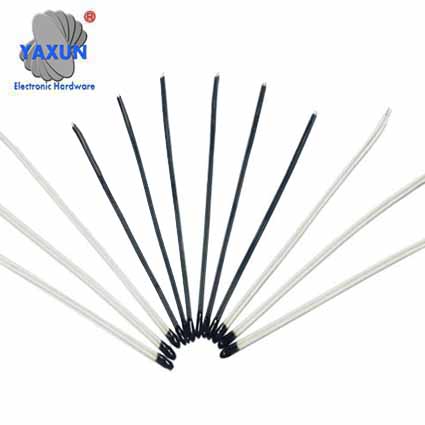 |
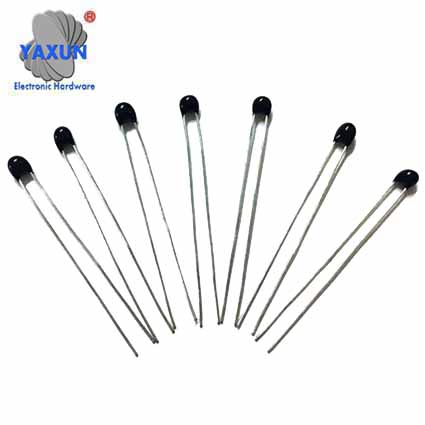 |
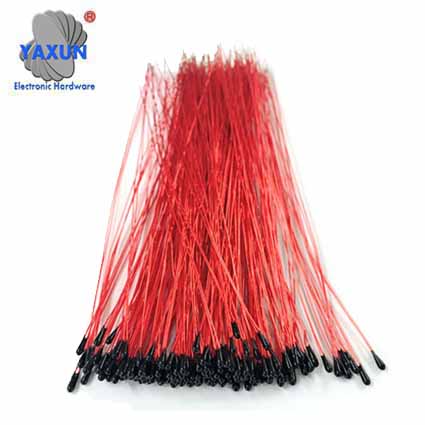 |
| Passive Type thermistor , bead type, insulated wires | bead Type thermistor | battery thermistor |
General thermistor
A characteristic of a thermistor is the change in resistance when the temperature changes. Metals, semiconducting metal oxides (ceramic materials) or silicon are used as resistance material, with both materials with positive and negative temperature coefficients being used depending on the application.In the small-signal behavior, the dependence of the resistance R on the temperature T can be described as a linear equation with the proportionality factor k:
The factor k is also referred to as the first-order temperature coefficient. Depending on the sign of this coefficient, a distinction is made between NTC thermistors with negative coefficients and PTC thermistors with positive coefficients. In the case of thermistors, also known as NTC resistors, the resistance value decreases with increasing temperature. With PTC thermistors, also known as PTC resistors, the resistance value increases with increasing temperature.
Thermistor applications
measuring technologyPTC thermistor
Pure metals are PTC thermistors. In industrial temperature measurement technology, measuring resistors made of platinum, like the platinum measuring resistor, are common and standardized. With suitable equipment, they can be used up to 850 ° C. They have an almost linear characteristic with a relative change in resistance of just under 0.4% per ° C.
Designs with ceramic materials can be used up to around 200 ° C. Their characteristic curve increases in a narrow range around their nominal response temperature by up to 30% per ° C. In terms of measurement technology, they are hardly more suitable than for the statement "too cold / too warm".
NTC thermistor
Thermistors with negative temperature coefficients (NTC, NTC thermistors) are highly dependent on defects, such as the doping of the base materials, due to the underlying semiconductor effect. Processing such as mixing, grinding, pressing and sintering has a major influence on the properties and long-term stability. Therefore, for a long time NTCs could only be produced with widely varying characteristics and, in their early days, gave the NTCs the reputation of being unsuitable for precise temperature measurement.
NTC thermistors can be used up to approx. 150 ° C. Compared to platinum measuring resistors, they have a significantly higher sensitivity (reference value: at room temperature, the amount is a power of ten higher). Their non-linear behavior is described by non-linear equations. The preferred representation of the dependency is given under resistance thermometer. Another common form of representation of the non-linear relationship is the Steinhart-Hart equation.
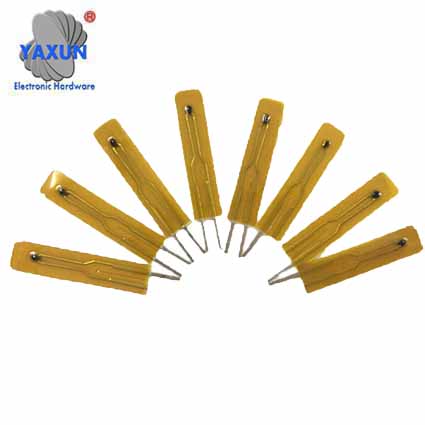 |
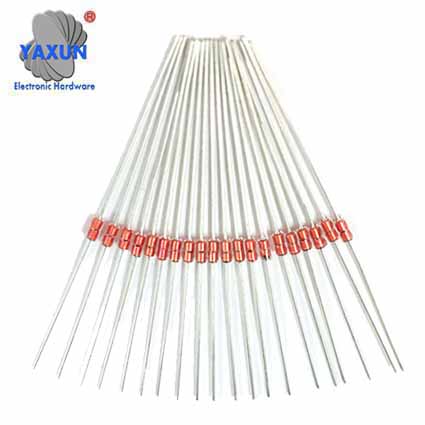 |
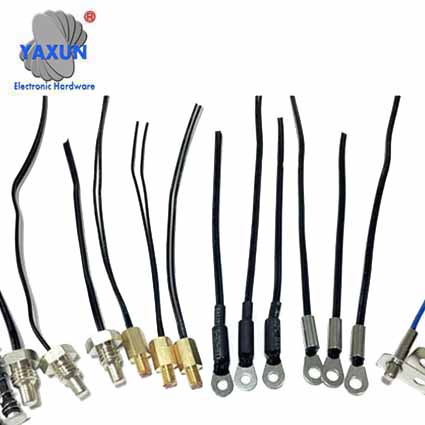 |
| motor thermistor | glass thermistor | battery thermistor |
Current limitation
PTC thermistorPTC thermistor for overload protection
PTC thermistors are used, among other things, for overload protection and current limitation in continuous operation. Some PTC resistors made of barium titanate show a strongly non-linear relationship between temperature and resistance value and are used, among other things, as wear-free switching elements - comparable to bimetal switches. These types are used for over-temperature protection of electric motors; If the motor heats up too much, the output is reduced or it is switched off.
In other applications, PTC resistors are used as slow, self-resetting fuses or to control the demagnetizing current in color picture tubes.
NTC thermistor
NTC thermistors are used to limit inrush currents in order to enable a soft start. An NTC thermistor in the supply line of an electrical device is cold before it is switched on, conducts poorly at the moment it is switched on and limits the inrush current purely ohmically. After switching on, it heats up due to the flow of current and reduces its resistance to the high initial resistance by often more than 2 powers of ten. The use of an NTC thermistor prevents a current spike.
if this could trigger an electrical fuse when switching on a power supply unit,
if this could damage a rectifier when charging a capacitor.
NTC thermistors for inrush current limitation cannot be connected in parallel to increase the permissible continuous current. The smaller of the resistors would get the larger share of the current, would heat up faster, and the already warmer component would heat up even further. As a result, one of the NTC thermistors takes over almost all of the current. A series connection is possible, however, if the aim is to increase the run-up time.
Thermistor designs
Wired disks or cylindersSurface mounted device (SMD); cuboid or e.g. SOT-23)
Wired metal eyelets, pills or typical semiconductor housings (TO-92, TO-220)
Screw-in metal housing sensor
There are also historical designs such as the iron-hydrogen resistance sensor, a PTC thermistor sensor, and the NTC thermistor sensor made of uranium dioxide.





